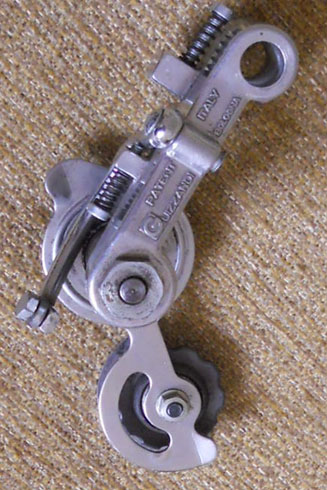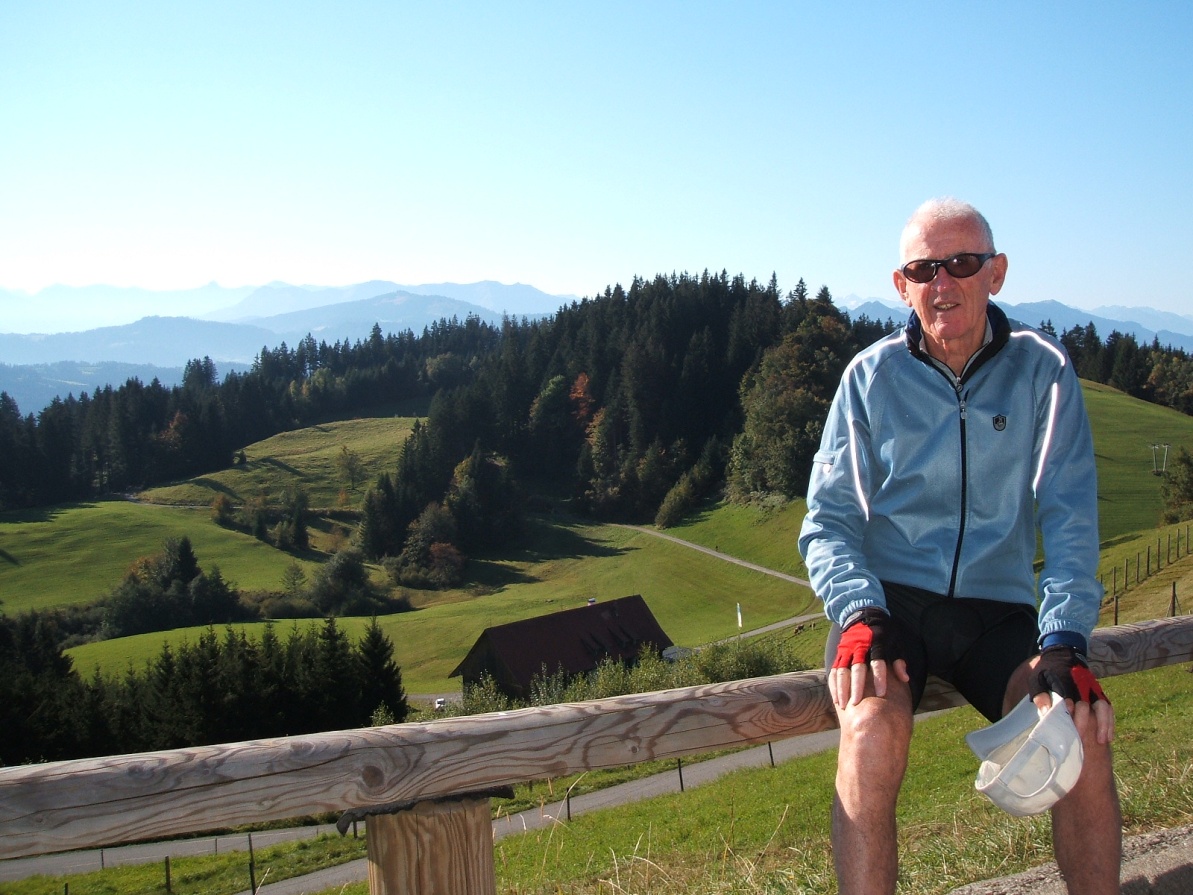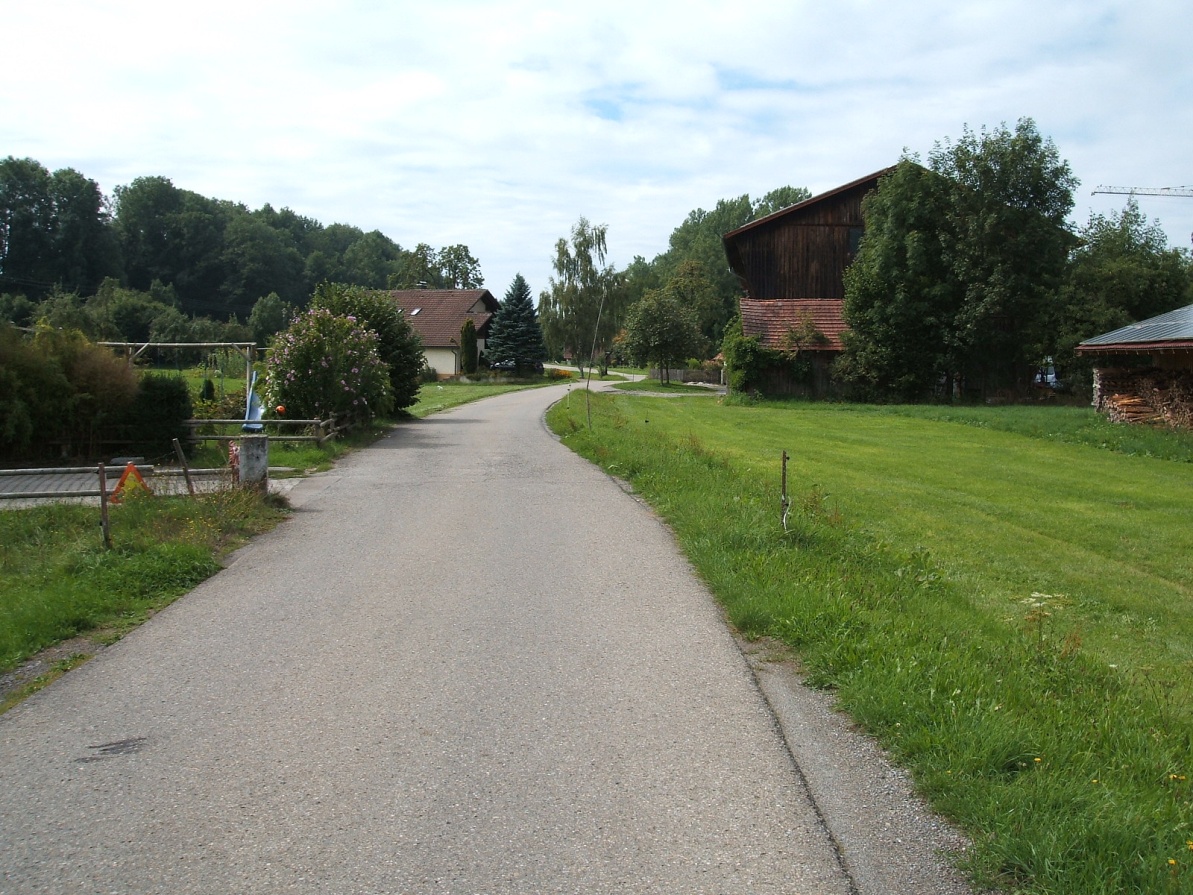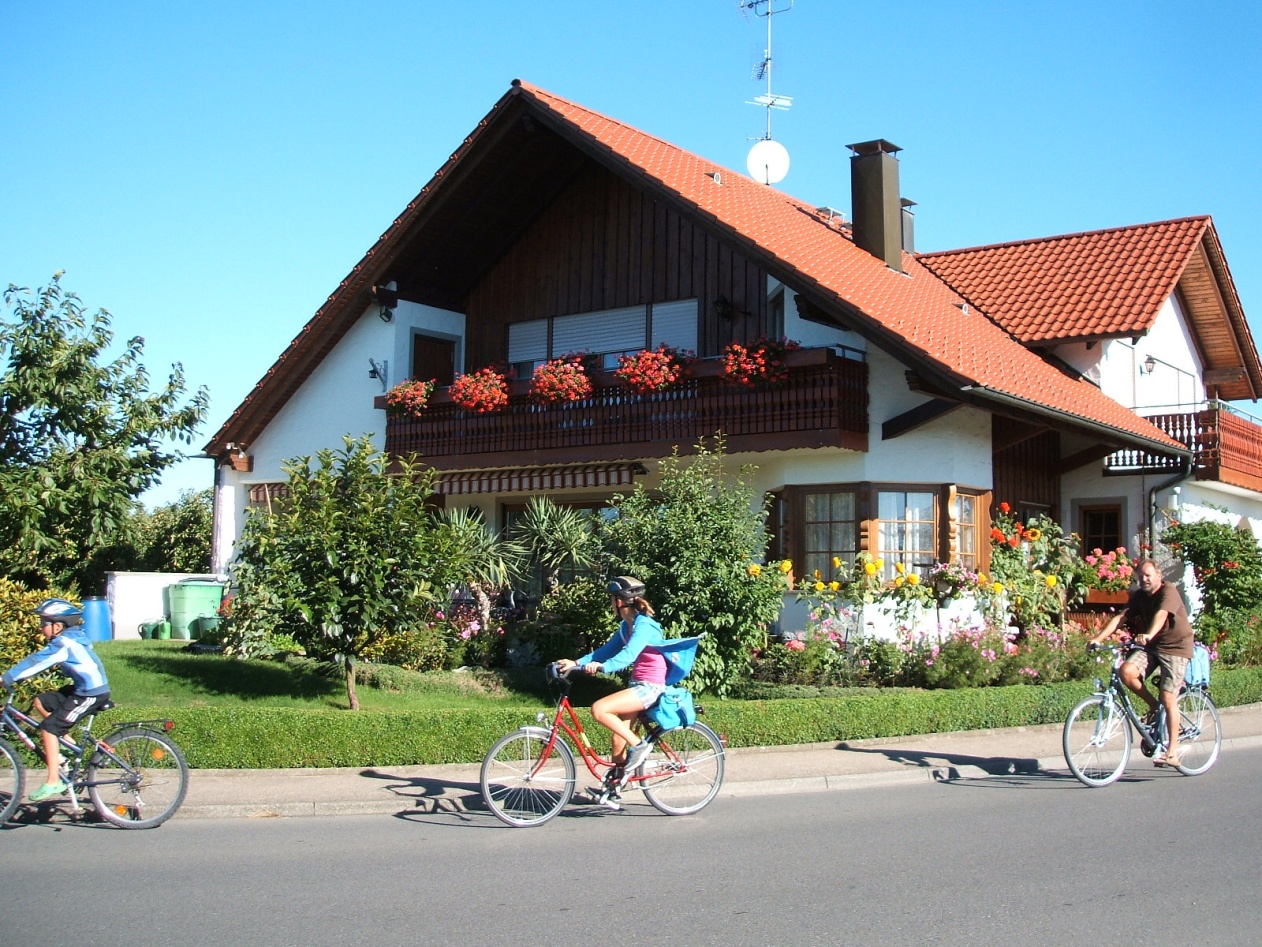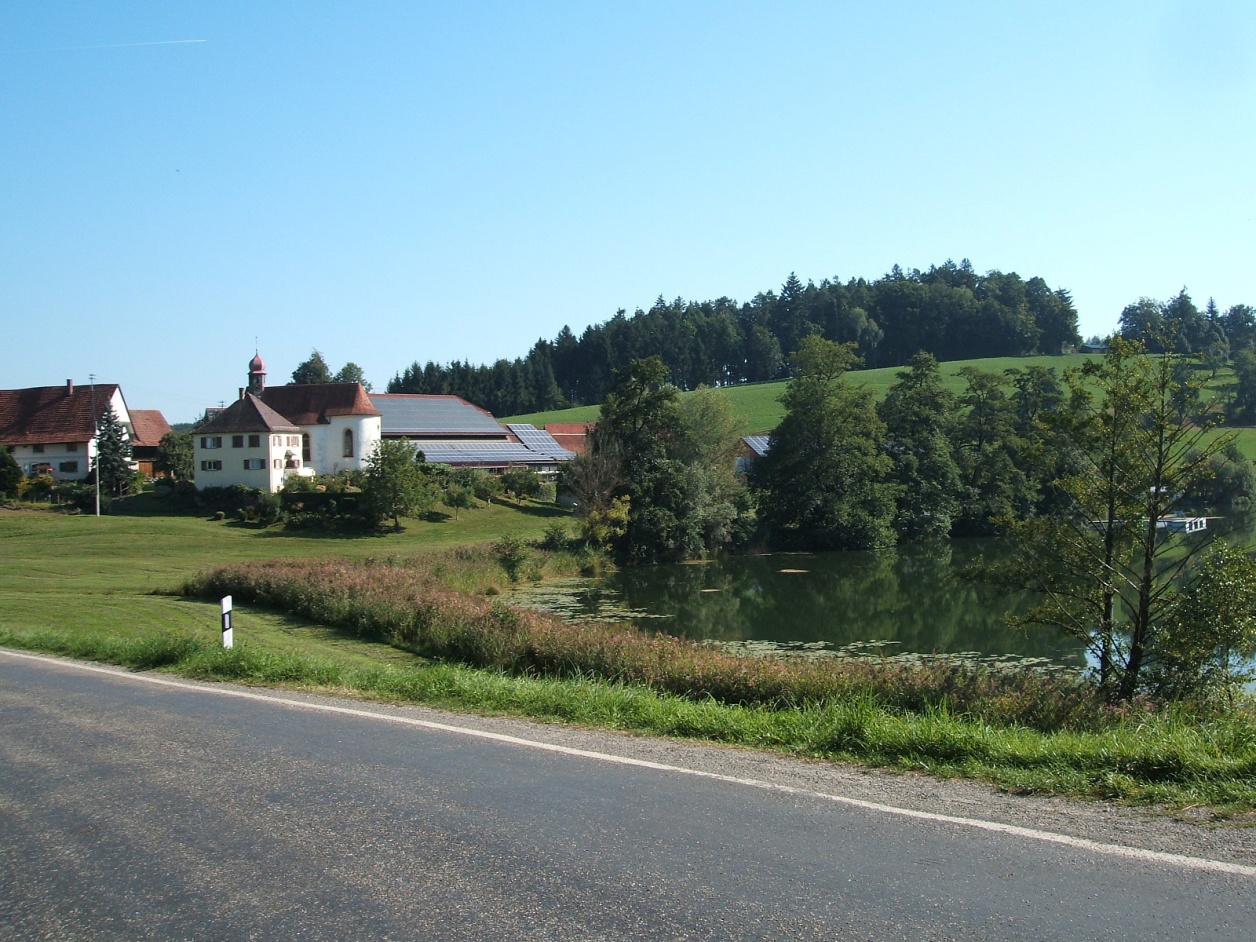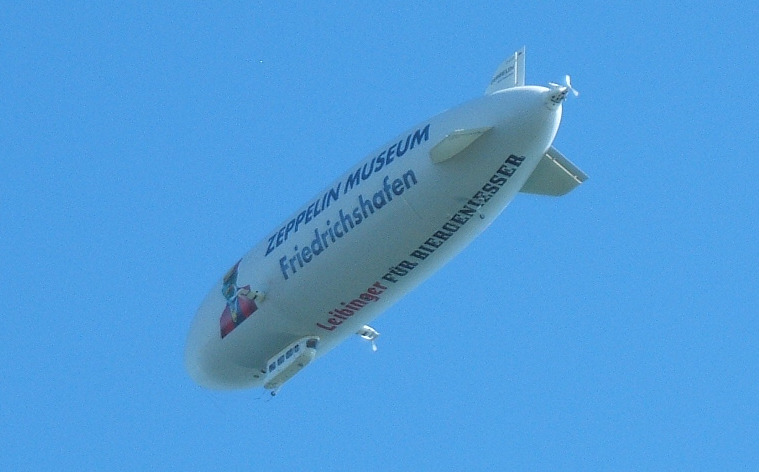Vol. 2, Issue 49 - January / February 2014
Posted: Tuesday 14th January 2014
A Happy New Year to all who use the website and who read Lightweight News. Our serious veteran rides in Cambridge area start in February so we have a short while to check over the collection. Just at this moment we have no real projects on as I am trying to say no to any further acquisitions since we need to contract rather than to expand.
THE CLASSIC CYCLIST’S NEW YEAR QUIZ, 2014 By Geoff Waters
Unless otherwise stated each question counts 2 marks. Answers and score ratings at the end. Total: 50 marks
1. The African-American cyclist who won the world professional sprint title in 1899 was:
a) George Banker b) John Nelson c) Bobby Walthour Sr. d) Major Taylor
2. Which Italian newspaper sponsors the Giro d’Italia?
a) Il Corriere b) La Gazzetta dello Sport c) La Settimane d) Bicisport
3. Who was the British cyclist who won the first Bordeaux-Paris road race in 1891?
a) James Moore b) G.P. Mills c) Arthur Linton d) Jimmy Michael
4. Who was Jack Sibbit’s tandem partner at the 1928 Amsterdam Olympics when they won the tandem sprint silver medal?
a) Dennis Horn b) Ernie Chambers c) Bill Harvell d) Frank Southall
5. In which year was the ‘maillot jaune’ first introduced in the Tour de France to indicate the race leader?
a) 1908 b) 1912 c) 1919 d) 1923
6. Which one amongst the following was not one of Reg Harris’ professional sprinting rivals during the 1950s?
a) Oscar Plattner b) Antonio Maspes c) Mario Ghella d) Arie Van Vliet e) Jef Scherens
7. Which one of the following was an indoor Parisian velodrome?
a) Stade Buffalo b) Parc des Princes c) Vel d’Hiv d) Vincennes
8. To what type of track event does the term ‘demi-fond’ refer?
a) Match sprint b) Individual Pursuit c) Madison d) Stayer e) 1000 metres TT
9. After Hetchins (23 models), which is the most numerous brand of lightweight exhibited in ‘Readers Bikes’ on the Classic Lightweights website?
a) Ephgrave b) Hobbs of Barbican c) Gillott d) Claud Butler e) Holdsworth
10. What is the surname of the two famous Belgian cycling brothers hidden in the following?
MIND CAV KEEL
11. Who won the first official UCI women’s road race title in 1958?
a) Beryl Burton (GB) b) Elise Jacobs (Luxembourg) c) Yvonne Reynders (Belgium)
12. Which one of the following classics did Tom Simpson not win?
a) Tour of Lombardy b) Bordeaux-Paris c) Tour of Flanders d) Milan-San Remo e) Paris-Roubaix
13. Which one of the following Italian cyclists never won the UCI world professional road race title?
a) Alfredo Binda b) Fausto Coppi c) Gino Bartali d) Learco Guerra e) Ercole Baldini
14. Which one of the following professional road teams did Eddy Merckx never ride for?
a) Molteni b) Faema c) Brooklyn d) Peugeot
15. Which Australian cyclist won the world amateur match sprint title in 1949, the world amateur pursuit title in 1950 and the world professional pursuit titles in both 1952 and 1953?
a) Russell Mockridge b) Hubert Opperman c) Dunc Gray d) Sid Patterson
16. Which one of the following steel lightweight tube sets was not made by Columbus?
a) Max b) Record c) AIR d) Matrix e) Speedstream
17. Writing under the pen name ‘Velocio’, the influential French cyclist and cycling writer, Paul de Viviè (1853-1930), advocated the use of derailleur gears and championed:
a) Strict amateurism b) Cycle touring c) Road time trialling
18. On a lightweight with 26” wheels and fitted with a 15T single fixed sprocket, what size chainwheel is required to obtain a gear of 88.4”?
a) 48 b) 49 c) 50 d) 51
19. Which one of the following derailleur gear systems was made in Italy?
a) Huret b) Simplex c) Gian Robert d) Zeus e) Osgear
20. The ‘Malvern Star’ is a lightweight built in:
a) New Zealand b) Canada c) Australia d) South Africa
21. ‘MILREMO’ was a brand of lightweight components distributed by:
a) Constrictor b) Holdsworth c) JP Routens d) Ron Kitching
22. In which year was the legendary ‘Coppi Meeting’ held at Herne Hill track, London?
a) 1956 b) 1957 c) 1958
23. What is the first name and surname of the famous Italian lightweight frame builder hidden in the following?
NOT CONES GALORE
24. What was the official name of the controversial South African stage race first held annually during the apartheid era in defiance of the international ban by both the UCI and the IOC?
a) Wynland b) Panorama c) Rapport d) Argus
25. On a lightweight machine with a 72 degree head angle, if the front forks are changed from one pair with a rake of 3 inches on its blades to another pair of forks with a rake of one and a half inches, the machine’s ‘trail’ and thus its self-centring tendency:
a) Increases b) Decreases
Answers at end of this newsletter (no cheating!)
I have recently seen details of two L’Eroica style rides to be held in the UK and it seems to me as if organisers are trying to “out rough road” the Italians. L’Eroica was started many years ago when there were proposals in Italy to tarmac over the white roads, or ‘strada bianca’ as they are known. The event was a form of protest to draw attention to what was proposed and which action was opposed by traditionalists. The rest is history and the event now draws some 5000 entries every year.
The essence of the event to me is the gathering of so many bike classic bike enthusiasts in one place and the way the Italians can give their whole-hearted support to the cycling event in their village and the surrounding area. No “No L’Eroica here” stickers in the windows and no “Lycra Lout Hooligans should be Barred” headlines in their local version of the tabloids (if such a thing exists which I hope does not).
If I was organising such an event I wouldn’t consider it essential to find the roughest roads in the vicinity on which to hold it but maybe incorporate a few reasonable off-road sections if that is what people want. Having read descriptions of events to be held in the UK I am put off by the suggestions that a special bike should be built for the event. In Italy I would guess that a majority of entrants complete on a classic lightweight and many ride lightweight wheels and tubs which always seem to cope with the rough terrain.
One of the UK versions is using miles of disused railway lines which can be fine if they have been improved for road use but they can be very jarring and destructive. I have ridden on some such lines across moors on a mountain bike and found it very technical and demanding of the machine. Does anyone have experience of the lines proposed for use in the Bakewell area next year?
I guess I don’t need to tell you that rough-stuff is not my idea of pleasure on a bike – give me smooth tarmac any day which may be why we spend so much time cycling on the beautifully smooth roads of Bavaria. Having said that I know many who enjoy the challenge of rough-stuff and a very good friend is President of the Rough Stuff Fellowship which specialises in this aspect of the sport.
We recently had a cycling holiday in Germany, staying on the shore of Bodensee and close to the border with Austria. From here it is also quite possible to cycle on through Austria and into Switzerland – the first time we did it we forgot passports and Switzerland is outside the Eurozone! Luckily we were able to cycle back through the border post without being checked but it was a lesson learned. Another way to do this tour is to cycle round the lake through Austria to Switzerland and then catch a boat back across the lake to the village we stay in which takes about an hour. Being a very cycle-friendly area the boats are very cooperative and on one journey (we have been several years) they had more bikes than allocated space so the extra ones were all put into the dining room, not a thing you would expect in the UK. It was interesting to see the crew organise this as they asked everyone where they were going to and then loaded the bikes in reverse order so that when the ship docked in the port the right bikes were ready to be taken off first.
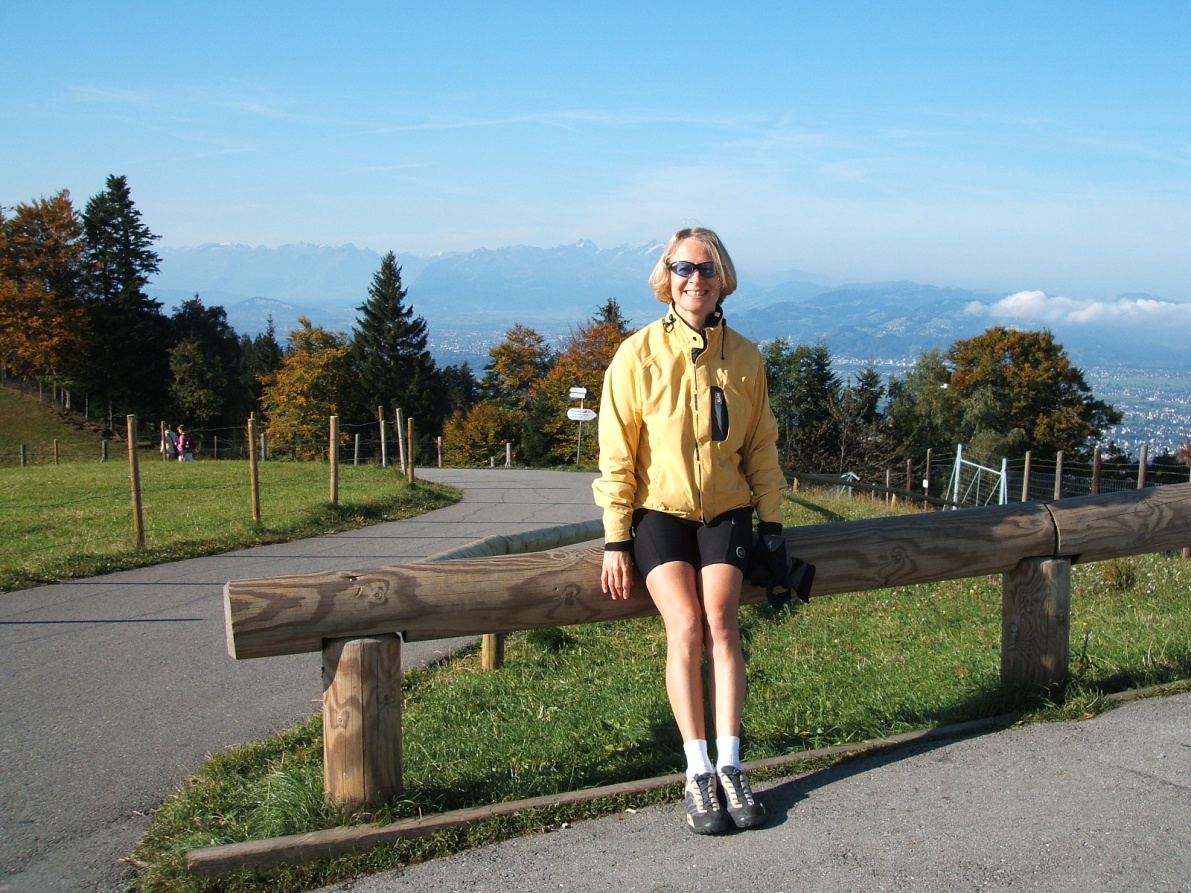
This year we found that we spent more time inland in the beautiful area known as Allgau which is hilly and very picturesque. We often dropped back down to the lakeside in the late afternoon for a nice ‘cuppa’ and a cake at the lake edge at Bregenz in Austria. Bregenz is famous for its ‘floating’ opera stage jutting out into the lake with the auditorium seating on dry land. For every production they produce amazing giant sets which take your breath away.
The image below is not a very good example as it doesn’t have people to show the scale but to give you some idea, you can see the giant auditorium seating 7000 and any of the cast on the green area would look like ants in this view if the stage. For more images of this amazing place see this link:
http://laughingsquid.com/the-marvelous-floating-stage-of-the-bregenz-festival-in-austria/
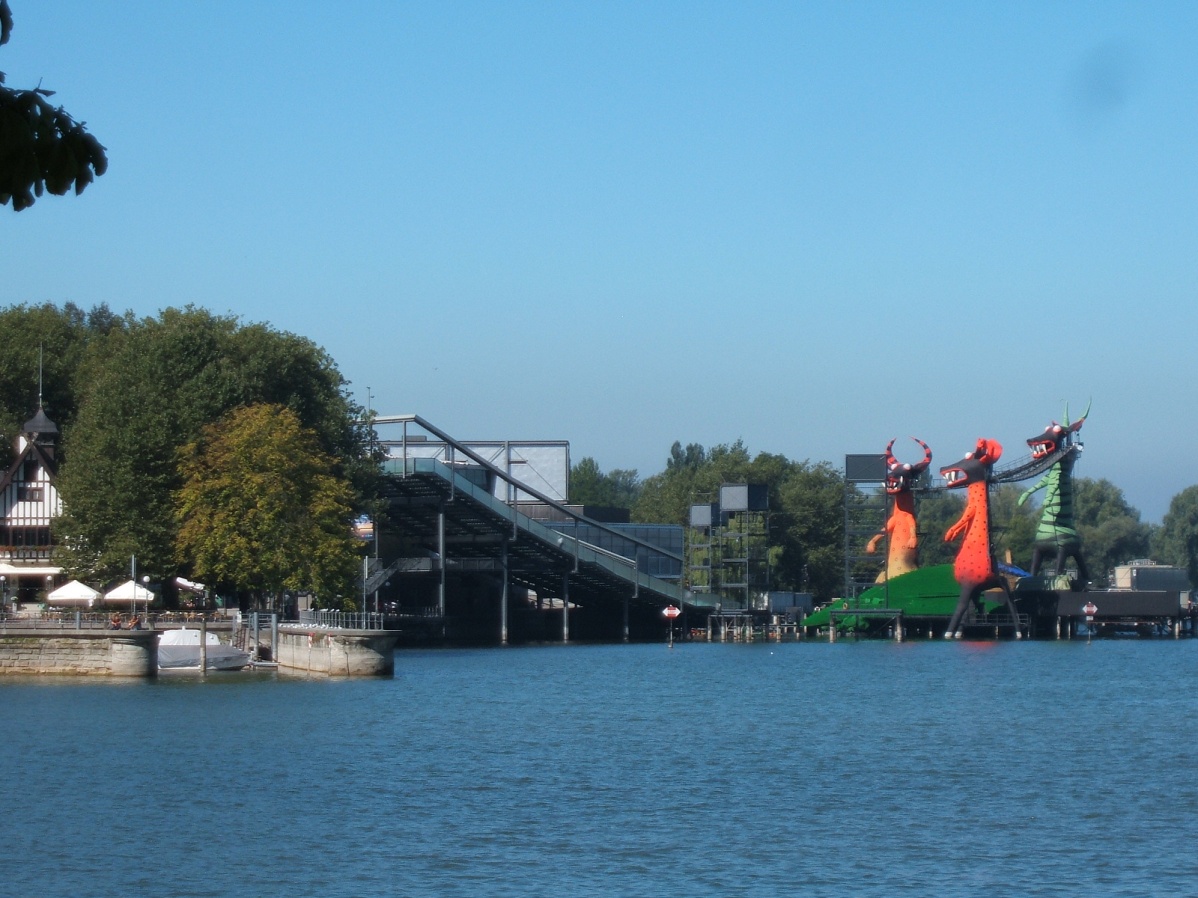
What I did notice was that nearly every local bike we saw on the cycle paths around the lake was equipped with disc brakes. Discs seem to have made a great leap forward in the last couple of years and my ideal winter bike would have them fitted to save that filthy gunge which seems to materialise on the rims in wet weather which makes it impossible to repair a puncture without filthy hands (and often clothes). I do know that some people carry rubber gloves for this emergency but I find they really hinder the repair, especially replacing the tyre which I aim to do without recourse to levers and the rubber-to-rubber contact makes getting the tyre onto the rim quite difficult..
More leading lightweight manufacturers are fitting discs to their top range bikes these days but the fact that they cannot be used in the top international road races as they are banned by the UCI is obviously a drawback. I think that a lovely racy carbon bike with discs looks so sleek. I never realised how obtrusive the stirrups looked until they weren’t there. Some builders are now incorporating the conventional front brake stirrups into the aerodynamics of the fork, some at the front, some at the rear. This also results in that sleek look, especially if the rear brake is hidden behind the bottom bracket on the chainstays. Thwarted by the ban on discs, some manufacturers are trying out hydraulic operation in place of cables on conventional brakes. So far I haven’t tried this set-up and to tell the truth my only disc brake experience has been on a mountain bike several years ago. We missed the boat with our folding holiday bikes, the Airnimals, as we had them several years before they became available with the disc option.
We are reducing the size of our collection due to lack of storage space. See sale proviso at the end of the list. It is really hard to decide which should go and which should stay but after much thought we have decided on the following for now:
1951 Hobbs Raceweight – 24″ frame with the classic fixed-wheel build of Conloy road sprint rims on Harden large-flange D/F hubs 40/32 built with 15/17 double butted spokes. BSA chainring with Brampton B8 pedals (Christophe clips), GB alloy Spearpoint stem with early Maes bars with ferrule. GB brake to front wheel. A classic 50s build. (see Readers’ Bikes) £850
1950 Ephgrave No. 1 – 20½” frame, Fiamme sprint rims built with 15/17G spokes onto Harden Bacon Slicer large-flange hubs, Chater-Lea round crank single chainset on Chater BB. Simplex 5-speed Tour de France gear, GB alloy Spearpoint stem with the rare Capo Berta bars, Mansfield laced saddle. £1400 with option of Fiamme sprint rims on the rare classic Airlite small-flange QR hubs (in lieu of Fiamme on Hardens) for £1300
1944/5 Bates BAR – 19½” frame, Fiamme sprints on Airlight large-flange hubs, Chater-Lea single chainset with round cranks, Simplex 4-speed Tour de France gears , very rare early Burlite levers and stirrups, GB alloy Spearpoint stem with the very rare Capo Berta brakes, Brooks B15 saddle, £1200
Two others may well join the list soon, my 1949 welded Mercian and my 24″ orange Flying Scot (not Patricia’s) which are both in Readers’ Bikes on the website.
I also have a Rotrax La Premiere on fixed, fitted with optional mudguards for £450 – the specification is not identical to the entry in Readers’ Bikes. I have an optional 27″ Sturmey FM wheel which I could substitute for the D/F for an extra £50. I did have the Rotrax built to this Sturmey specification before I became slightly obsessed with riding fixed!
If anyone has an Italian classic (59cm) and wished to acquire a UK classic of the 50s era then perhaps we could talk. Ideal would be a Colnago Master Olympic frame/machine of just about any age, but other Italian classics considered.
At this stage we can only cope with sales where the bikes are picked up here in Cambridge. We would obviously do all we could to make this easier for you if you are able to consider this arrangement. We realise that this condition severely limits sale options but if this does not work we will have to consider a different avenue of sale.
Marten Gerritsen (http://www.m-gineering.nl/) points out: You write in the latest Cambridge Lightweight News that SA sprocket washers are unavailable. However, they are still a current SA part, with part no. HMW 127 0010. 0P. Anyone dealing in SA spares should be able to get them. I sell them for about £1 /each.
David Toppings piece on Campag QR’s caught my eye especially when he mentions the lever being on the gear mech side and this being unusual. However, when you look at photos of Coppi etc. in the early days of using Gran Sport mechs, the QR lever always appears on the mech side. I’ve always thought of this as being a bit odd as it gets mixed up with the cable loop etc., the off-side is a far more sensible place to put it.
I’ve attached a photo of a rear mech that came into the possession of Mark who owns our local bike shop. Thankfully he is interested in retro bikes and classics and recognised that it could be of interest. A customer brought it in with a bag full of components and asked if Mark could fit them on a new bike. They were all a bit rubbishy so Mark said no but asked if he could keep the mech as the guy said he was going to skip it all. I sent photos to Mike at Disraeli Gears and he has one – but rather battered and worse for wear whereas this one looks like it’s never been used. However, he says he can’t find any info about the brand and I’ve trawled the web as well to no avail. The only thing Mike has found is an Italian Patent application for a bicycle gear change mechanism dated 1970 -72 which seems a bit recent given the styling of the mech. If it is this date – then why? Looks like someone trying to reinvent the wheel given that parallelogram designs were industry standard by then.
Fix-Free Drive
Bryan Clarke
Does anyone remember the Fix-Free Drive?
I discovered the pleasure of riding a fixed wheel bike some years after a acquiring my first lightweight bike and may never have experienced it if I hadn’t fallen in love with a Magenta and chrome H E Green road path frame which I bought from Youngs Greenwich shop in the early 1980s.
I quickly found that it was not going to be possible to ride with a single freewheel because the back bridge was undrilled and very tight against the rear wheel. So with some help I taught myself to ride a fixed and learnt to love it for many years on this superb frame.
However, I was already in my 30s and never really felt comfortable running my legs off downhill in toeclips. So when I saw an advert for the fix free drive I sent off for the brochure although I could never quite bring myself to actually buy one sadly.
Devised by a small engineering company in the West Country (who still exist) a simple clutch and freewheel was operated by a ‘Sturmey’-style trigger to enable the rider to switch from fixed to freewheel at will. It was designed to fit to any standard bike or BMX.
Two pages from the brochure are shown on the next two pages below:
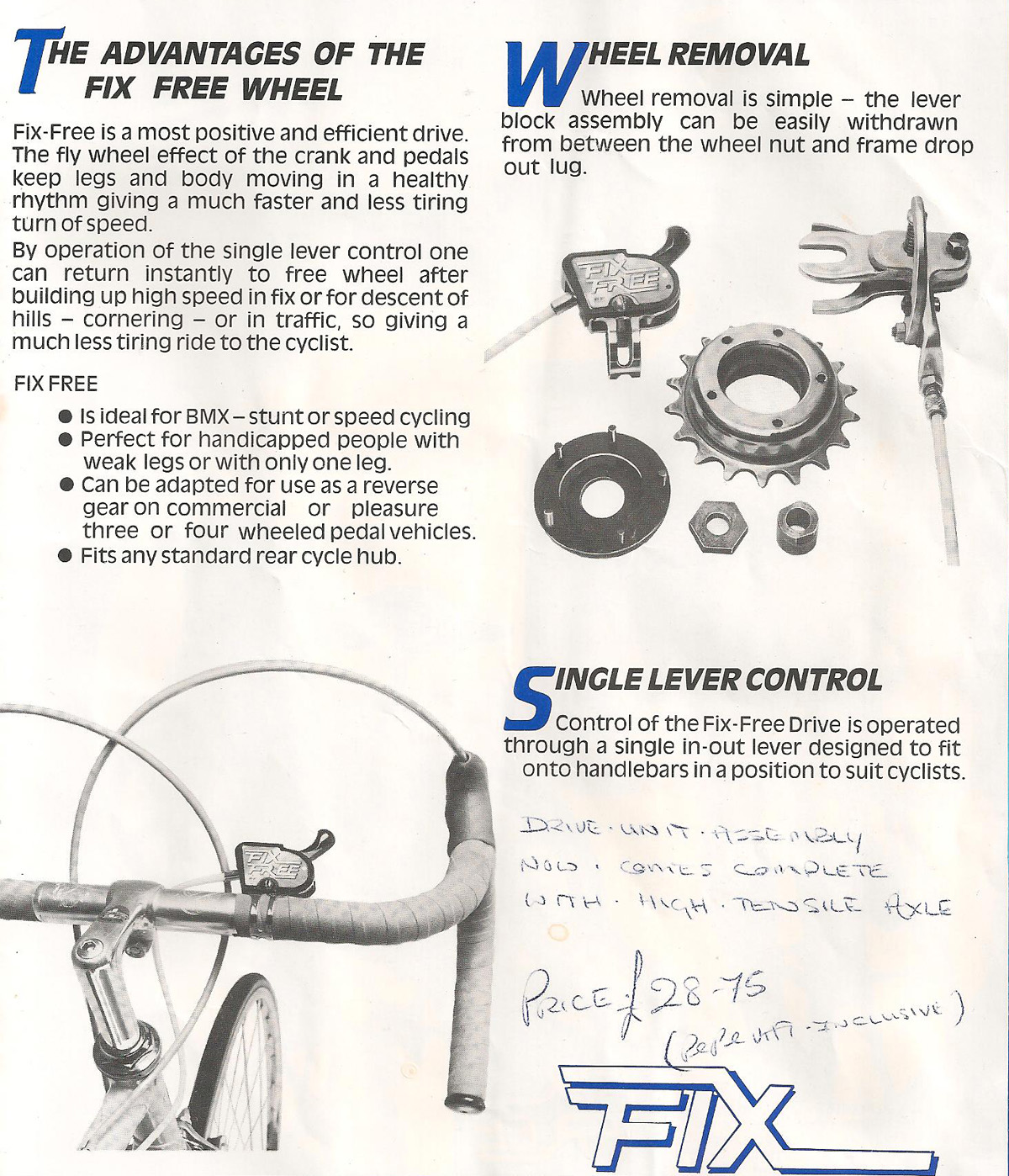
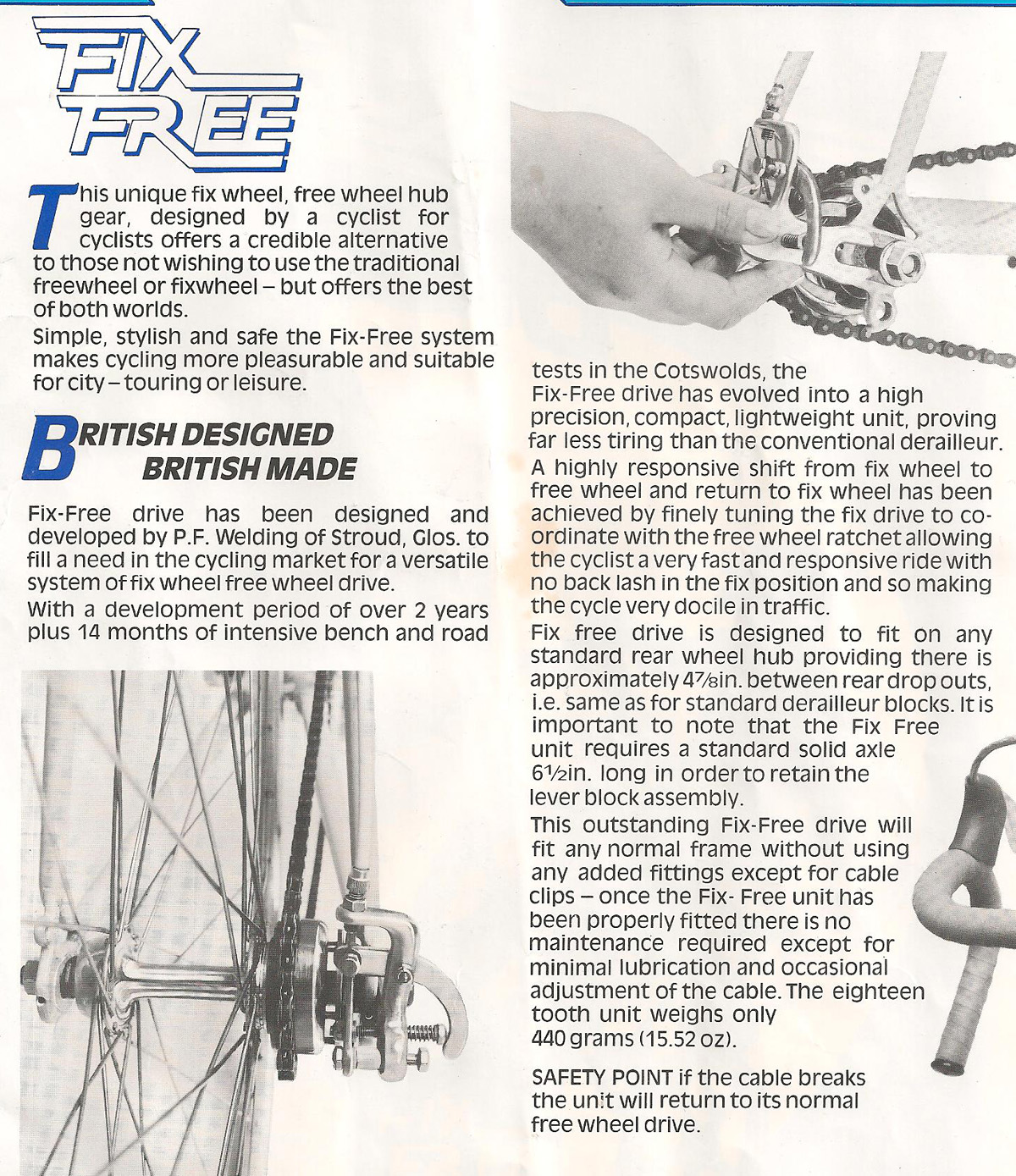
Answers to 2014 Cyclists Quiz
1. d) Major Taylor (The other US cyclists listed won the following world titles: George Baker-pro sprint 1898; John Nelson-amateur stayer 1899; Bobby Walthour Sr.-pro stayer 1904, 1905)
2. b) La Gazzetta dello Sport (Event first held in 1909)
3. b) G.P. Mills (End-to –End record holder and leading British rider of his generation)
4. b) Ernie Chambers (At the subsequent 1932 Los Angeles Olympics the Chambers brothers, Ernest and Stanley, won the tandem sprint silver medal)
5. c) 1919 (First worn by Eugene Christophe on stage 11; race won overall by Belgian, Firmin Lambot)
6. e) Jef Scherens (World pro sprint champion 1932-1937 and 1947; retired before Harris turned professional; d.1986, aged 77)
7. c) Vel d’Hiv (Velodrome d’Hiver)
8. d) Stayer (paced event; originally human powered tandems, triplets and quads were used; replaced by motorcycle pacing machines in the early 1900s; noted for high speeds attained; special stayer machines had smaller front wheels and reverse rake front forks; it is estimated that between 1899 and 1928, 33 stayer riders and 14 pacers were killed on tracks in Europe and America [Andrew Ritchie, Quest for Speed, 2011, p.454])
9. d) Claud Butler (16 models) Others: Hobbs of Barbican 14; Ephgrave 10; Holdsworth 10; Gillott 9
10. DE VLAEMINCK (Eric and Roger)
11. b) Elise Jacobs (Luxembourg). Beryl Burton won the road title in 1960 and 1967
12. e) Paris-Roubaix (Classics won by Tom Simpson: Tour of Flanders 1961; Bordeaux-Paris 1963; Milan-San Remo 1964; Tour of Lombardy 1965)
13. c) Gino Bartali (World road champions x years: Alfredo Binda 1927, 1932; Learco Guerra 1931; Fausto Coppi 1953; Ercole Baldini 1958)
14. c) Brooklyn (Chewing gum manufacturer; sponsored Merckx’s rival, Roger De Vlaeminck; GIOS bicycles used by team; iconic US-style stars and stripes team jerseys)
15. d) Sid Patterson (Sponsored as a professional by SUN Cycles, UK)
16. e) Speedstream (An oval steel tubing set made by Reynolds during the first aero craze in the 1980s)
17. b) Cycle touring (Velocio invented the term cyclotourisme, edited the magazine Le Cyclisme and advocated randonneur riding [long distance touring])
18. d) 51 (26” x 51/15=88.4”)
19. c) Gian Robert (A derailleur gear system produced in Padova, Italy between 1960 and 1980)
20. c) Australia (Established in 1903 in Melbourne, the ‘Malvern Star’ lightweight brand was made famous by Sir Hubert Opperman before WWII and by Sid Patterson immediately after the war)
21. d) Ron Kitching (Based in Harrogate, Ron Kitching imported many lightweight components from the Continent in the post-WWII period, often rebranding these as ‘MILREMO’. These included quality brakes and pedals. The MILREMO range was distributed to the trade and also by mail order to individual customers both at home and abroad)
22. c) 1958 (14th September)
23. Ernesto Colnago
24. c) Rapport (The Rapport Toer was held annually from 1973 onwards. The veteran British rider Arthur Metcalfe won the race in 1974. It continued after the ending of apartheid in the early 1990s when it attracted entries from Tyler Hamilton and Alexander Vinokourov who went on to become top professionals. The last Rapport Toer was held in 1999)
25. a) Increases. (The larger ‘trail’ or ‘offset’ has the effect of increasing the front tyre’s ‘footprint’ on the road, making the machine less manoeuvrable and sluggish at low speed but more stable at high speed. It is easier to ride ‘hands off’ because the self-centring ‘caster effect’ is increased. Modern road machines generally have less fork rake, and thus more trail, than classic machines)
Scoring
(Total = 50 marks)
Marks
40-50: You are a classic cycling expert!
30-39: Well done!
20-29: Getting there!
10-19: Room for improvement!
<10: Must try harder!
Some images from cycling Bodensee and the Allgau are on the next three pages:
Posted: Tuesday 14th January 2014
Contents
This article appears in the following categories.
Upcoming Events
Whether you are looking for a gentle social meet up, or a 100-mile ride browse the community’s upcoming events and plan your next weekend outing.

